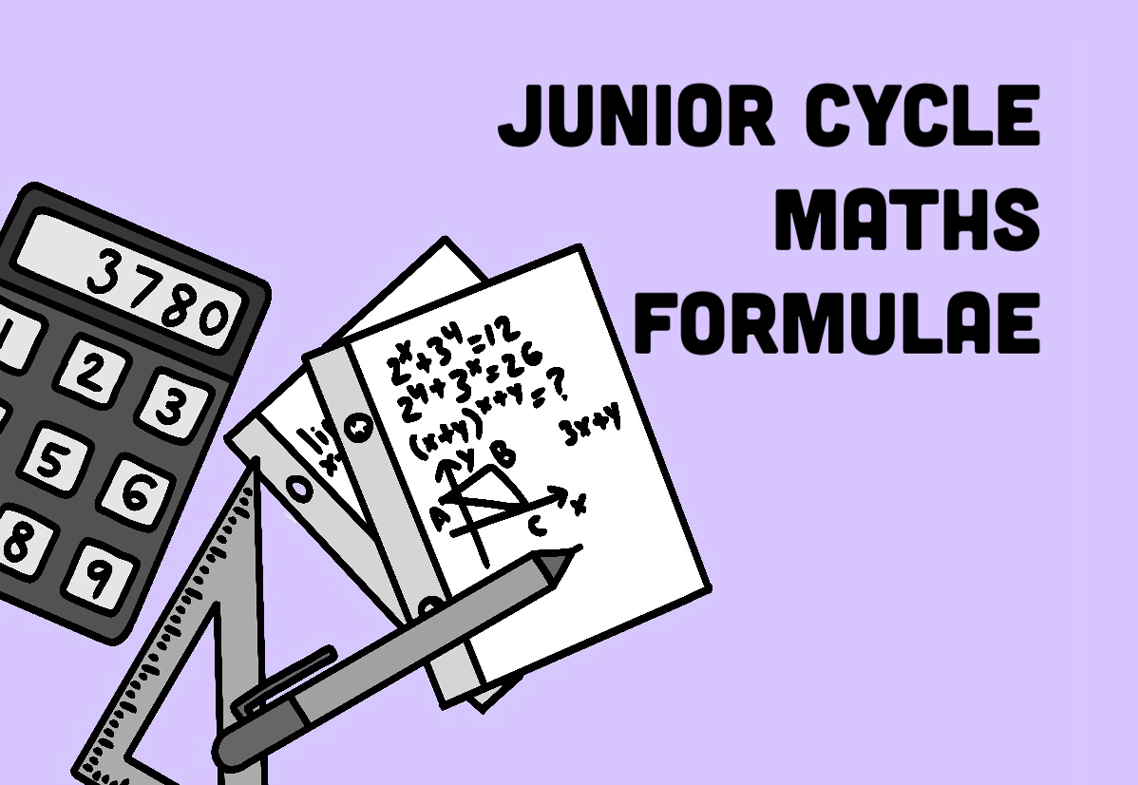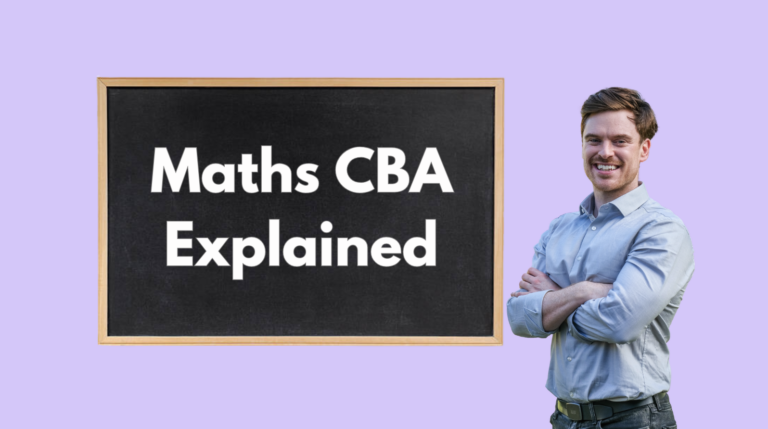WhatsApp:
+353 87 202 0389
Junior Cycle Formulas You Must Know
Who else was shocked when their maths teacher told them that all the Junior Cycle Maths formulae are printed in a booklet and provided on exam day? I know I was! It’s handy that we don’t have to memorise all of the Junior Cycle Maths formulae! However, the Formula and Tables booklet is quite hefty, and only a small portion of it is relevant at Junior Cycle level. So, let’s discuss the formulae and relevant pages you’ll need so you’re not wasting time on exam day!
We’ve sorted the formulae by strand, which form part of the Junior Cycle Maths syllabus (check out our blog to learn more!). Most of the time, you’ll need to apply knowledge and skills from across the different strands to complete a question, but this way, it’s easier to get a clear view of what you need to know and when it’s relevant.
Number Strand
Pages 21-23 and page 30 of the Formula and Tables booklet contain all of the Junior Cycle Maths formulae and symbols relevant to the Number Strand. Not everything on these pages is important for the Junior Cycle, but we’ll explain what you should be looking for below:

Note: On pg. 21, only the formulae on the left-hand side if the page are relevant

Note: On pg. 22, only arithmetic sequence or series formulae are relevant


Note: On pg. 30, only the first 3 formulae are relevant
All of the important formulae for this strand can be found in the pages above, but obviously, this is not an exhaustive list of the equations you will need. For financial maths in particular, there are other things you need to know how to calculate, such as:
- profit or loss
- percentage profit or loss (on the cost price)
- cost price
- selling price
- standard rate income tax
- net pay (including other deductions of specified amounts)
- value for money calculations and judgments
- mark up (profit as a percentage of cost price)
- margin (profit as a percentage of the selling price)
- income tax
- net pay (including other deductions)
If you are struggling with any of these, there’s no better place to head than over to our booking page to have your free trial of our maths grinds, where we tackle all of the topics examined at Junior and Leaving Cert Levels!
Algebra and Functions Strand
Algebra is one topic that every student seems to struggle with on some level. It’s a big reason why many people sign up for our maths grinds, because we have some of the best algebra teachers in Ireland, and they know all the secrets to success.
If you want to hear one of them now, here it is: out of all the Junior Cycle Maths formulae, the only algebraic formula that you will need is that to find the roots of the quadratic equation ax2 + bx + c = 0, which can be found at the top of page 20.

And if you are really stuck with an algebra problem on the day of the exam, a great place to start is by writing down this formula, because it is likely to earn you at least some attempt marks! You’re going to be using it a lot over the course of the Junior Cycle, so familiarise yourself!
Geometry and Trigonometry Strand
You need a lot of Junior Cycle Maths formulae for this strand, but they’re pretty much all located in one place, and it’s just a matter of plugging numbers in the place of variables, and away you go!
For the purposes of simplicity, we will break it down by Learning Outcomes found on the Junior Cycle Maths Syllabus.
2D and 3D Shapes (GT.2a-e)




Trigonometry (GT.4)
The formulae related to the Right-angled triangle are all you’ll need from page 16, but they’re crucial!

Geometry and Co-ordinate Geometry (GT.5a-c)
The Line is dead easy once you know which formulae to use. There are a good few, but if you can find keywords like ‘distance’, ‘length’, ‘midpoint’, and so on, you’ll be able to consult the names of the formulae in the log book and know exactly what you need to do!

Note: The notation of Geometry can be found on pg. 17

Note: On pg. 18, only the first 4 formulae are relevant

Note: On pg. 19, only the first formulae is relevant
Statistics and Probability Strand
At Junior Cycle Level, you don’t need any traditional formulae for Probability and Statistics. It is important that you understand a couple of key concepts such as:
- the Fundamental Principle of Counting
- probabilities involving equally likely outcomes
- relative frequency
While statistics and probability are fairly basic at JC Level, it is important that you have a solid understanding for both your CBA 2 and your Leaving Cert, where it starts to get quite tricky.
Conclusion
Now that you know all about the different strands and where to find them in the Formula and Tables booklet you won’t have to stress about not knowing where to find formulae on exam day. Good luck!
TJ— CEO of Breakthrough Maths.
Need help in Maths? Contact the Breakthrough Maths team here.





